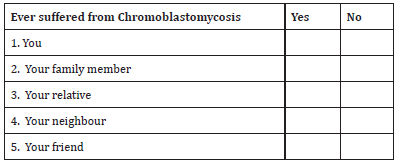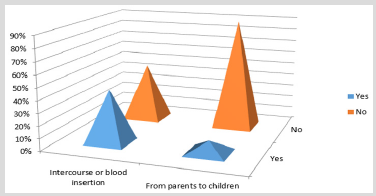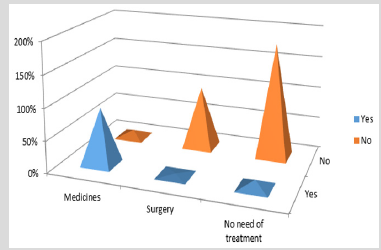Lupine Publishers | Journal of Research & Reviews Health Care
Abstract
Objectives of the present study were to evaluate the perspective of youth about chromoblastomycosis. A total of 100 subjects were asked to answer the questionnaire. The subjects were students in Bahauddin Zakariya University Multan, Pakistan. Alexander pedroso in Saopolo, Brazil studied the cases of Chromoblastomycosis in 1911. The name of disease was blastomycosa negra. The name of a disease figueria described by German Physician. It was done from the current study that most of the females said that chromoblastomycosis was not a viral, fungal, bacterial disease. There is a 50% chance whether it may or may not be a viral, fungal or bacterial.
Keywords:Chromoblastomycosis; Fungal Disease; Cauliflower
Introduction
Fungal infection of the skin is the Chromoblastomycosis, which is a long-term. Often in rural areas, in tropical or subtropical climates this infection occurs such as Madagascar in Africa and Brazil in South America . By many different types of fungi, this infection can be caused. Very slowly, chromoblastomycosis spreads. It is not often lethal and usually has a good projection, but it’s cure is very difficult. Medication and surgery, the several treatments include. Among the subcutaneous mycoses and is ubiquitous, Chromoblastomycosis is classified. Chromoblastomycosis disease was recommended by the International Society for Human and Animal Mycology in 1992.On the foot or leg chromoblastomycosis begins [1]. Where the skin is wrecked, other exposed body parts may be infected. Papules are formed in this disease. Dull red patches are formed when these papules extend. Objectives of the present study were to evaluate the perspective of youth about chromoblastomycosis (Tables 1-4).
Materials and Method
Results
Presence and absence of chromoblastomycosis in male and female is shown in the (Figures 1-4). In the first column graph it was showed that most of the females said that Chromoblastomycosis was not a viral disease and most males also said that it is not a viral. Most of the females took this disease not as a bacterial and most males said that it was not a bacterial disease [2-5]. Most of the females said that it was not a fungal disease and males also had a same opinion. Both males and females said that chromoblastomycosis was not a genetic disease. Most females said that chromoblastomycosis was a metabolic disease. But when we observed the disease then we concluded that chromoblastomycosis was a fungal disease. Then, next question asked from them that whether you, your family member, relative, neighbor and friend suffered from this disease or not then most of the females and males said no. The other question asked to them whether the disease by contacts or blood transfer or from parents to offspring was transmitted or not then the most females said that disease was not transmitted by contacts or blood transfer or from parents to offspring. The other question were that either the disease was treated by medicines, surgery or no treatment was available for that then most females and males said that it could be treated by medicines [5-8].
Discussion
In recent studies, questionnairebased studies had given an important development. Alexandre pedroso in Saopolo, Brazil studied the cases of Chromoblastomycosis in 1911. The name of disease was blastomycosa negra. The name of a disease figueria described by German Physician [9,10].
Conclusion
From present study, it was concluded that most of the females said that chromoblastomycosis was not a viral, fungal, bacterial disease. There is a 50% chance whether it may or may not be a viral, fungal or bacterial.
Read More About Lupine Publishers Journal of Research & Reviews Healthcare Please Click on Below Link:
https://lupine-publishers-research.blogspot.com/









No comments:
Post a Comment
Note: only a member of this blog may post a comment.